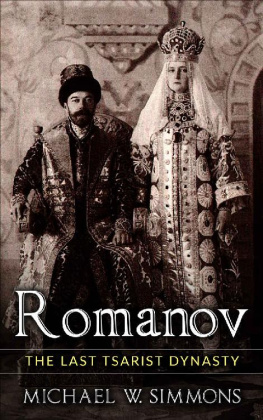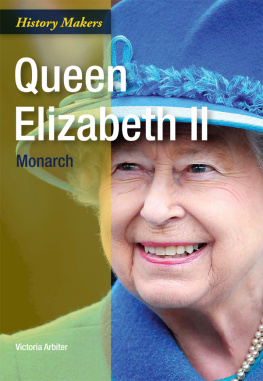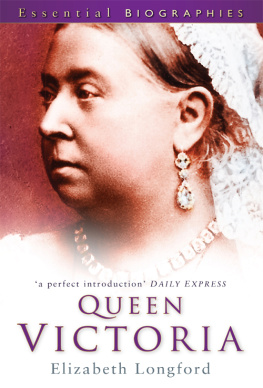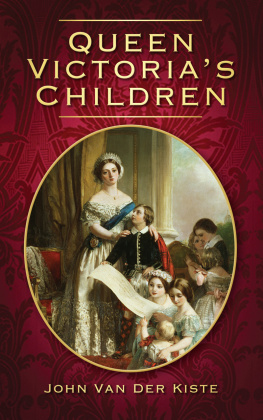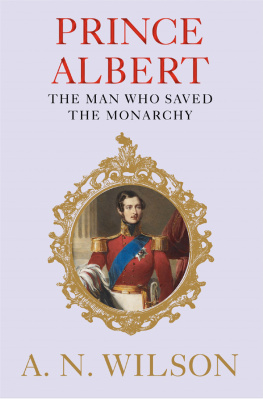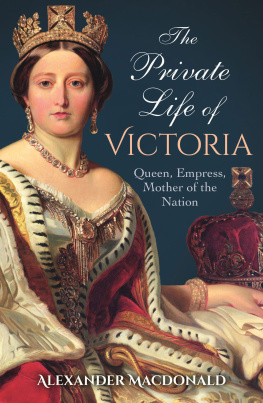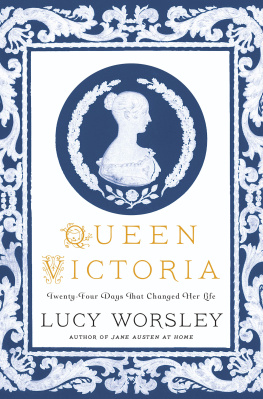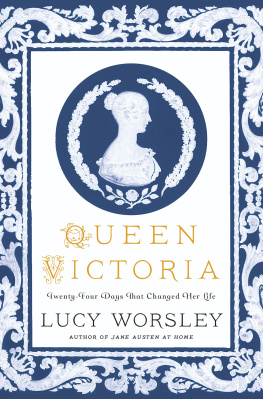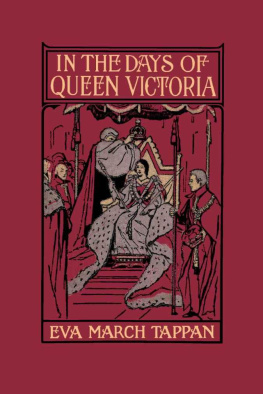Queen Victoria
Icon of an Era
By Michael W. Simmons
Copyright 2017 by Make Profits Easy LLC
profitsdaily123@aol.com
Table of Contents
Chapter One: The Princess-in-Waiting (1819-1837)
The race for an heir
On May 24th, 1819, an infant daughter was born to the Duke and Duchess of Kent at Kensington Palace, one of the residences of the royal family of Britain. Her birth marked the end of a frantic two-year race between the many sons of King George III to produce a legitimate heir for the royal succession. Though the king was still living in 1819, his eldest son had ruled the country as Prince Regent since 1811, a substitution made necessary by the fact that George III suffered from prolonged periods of mental incapacitythat is, madnessdue to what is believed to have been an untreated case of porphyria.
For many years, there had been an heir. The Prince Regents only child was the beautiful, intelligent, much admired Princess Charlotte. The Princesss succession to the throne was eagerly anticipated by the British people, as her father and her uncles were immensely unpopular. The Prince Regent was a spendthrift who ran up fantastic debts, and his lavish appetites and huge size made him a cartoonish figure of gross consumption. His most serious crime in the eyes of the nation was the fact he had abruptly and callously abandoned his wife, Caroline of Brunswick, shortly after Princess Charlottes birth, and afterwards taken up residence with a mistress, Maria Fitzherbert. In comparison to her father, whom she despised, Princess Charlotte was considered a model of virtue, restraint, and good judgment. But disaster struck the royal family when Princess Charlotte suffered a stillbirth and died of postpartum hemorrhaging in November of 1817.
King George III had suffered great unhappiness in his childhood, owing to domestic upheavals in his parents and grandparents generation. His own great-grandmother had been caught having an extramarital affair, prompting her husband, King George I, to banish her; he is also believed to have killed her lover. He then extended his rage to his son, the future George II, who could nothing but wrong in his eyes. Though George II himself had a happy marriage, the domestic curse transferred itself to his relationship with his eldest son, Frederick, Prince of Wales, which so miserable and strained that the king professed himself happy when Frederick died, leaving the future George III heir to the throne.
As a young man, George III was deeply affected by this legacy of family discord; he determined that, when he was king, he would distinguish himself from his forebears in the eyes of his people by doing good and setting a virtuous example for the nation. Though the traditional path to glory for a king was military victories, George III believed that "Virtue, religion, joined to nobility of sentiment, will support a prince better and make a people happier than all the abilities of an Augustus with the heart of Tiberius." But despite these excellent intentions, his numerous children were driven to restlessness and rebelliousness by his controlling approach to parenthood. His daughters were not allowed to marry until they were considerably older than was usual for women of their time. Unhappy under the paternal eye, they demanded a household of their own as soon as their brother became Regent. George IIIs sons enjoyed greater freedom than his daughters, but their lives were also dictated by the Royal Marriages Act of 1772, which forbade them to marry, except by the kings permission, until they were 25, after which they had to gain the approval of Parliament in order to marry, or forfeit their rights of succession. This led to secret marriages, mistresses, and a large number of illegitimate children being born to the royal children, including to one of George IIIs daughters.
Partially as a result of the Royal Marriages Act, partly due to simple bad luck, Princess Charlotte was, at the time of her death, George IIIs only legitimate grandchild. There was no shortage of heirs presumptive, since the king had twelve children living, but they were all middle-aged; it was therefore essential to secure the succession into the next generation. None of the married princesses had children, however, and as the youngest of them was already forty, there was no chance that they would become pregnant in the future. It was therefore up to the sons, who were a fairly dissolute bunch, to make marriages and produce children. The Prince Regent had divorced his wife and married his mistress, so there was no hope of more children from him. The Duke of York, Prince Frederick, was living apart from his wife and spent all of his time with his own mistress. The Duke of Clarence, who would succeed his brother as King William IV, had ten children with his mistress, but no legitimate issue. The Duke of Kent was living in Canada with his mistress. The Duke of Sussex had removed himself from the succession by marrying without permission, the Duke of Cambridge was unmarried, and the Duke of Cumberland, who had married in 1815, had no children.
After the death of Princess Charlotte, those of the royal dukes who were in a position to marry promptly ditched their mistresses, who had been their devoted companions for decades, and started hunting for wives, preferably wealthy ones. The British royal family was quite poor compared to most members of the aristocracy, and they depended on Parliamentary allowances for their incomeallowances that were never large enough for their extravagant tastes. But the manufacturing heiresses of England refused to marry any of their royal suitors, so the sons of George III turned to the German states, which had been supplying brides to the royal families of Europe and Russia since the eighteenth century. The Duke of Clarence married Princess Adelaide of Saxe-Meiningen; the Duke of Cambridge married Princess Augusta of Hesse-Cassel.
This left the Duke of Kent, then living in Belgium with his mistress of twenty-four years, a French-Canadian woman called Madame St. Laurent. The Duke himself described his thoughts after the death of Princess Charlotte and the nature of his relationship with St. Laurent in a private conversation with a Mr. Creevey, who recorded the Dukes remarks in a diary without his knowledge. The whole exchange is related by Lytton Strachey in his early biography of Queen Victoria:
Should the Duke of Clarence not marry, [the Duke of Kent] said, the next prince in succession is myself, and although I trust I shall be at all times ready to obey any call my country may make upon me, God only knows the sacrifice it will be to make, whenever I shall think it my duty to become a married man. It is now seven and twenty years that Madame St. Laurent and I have lived together: we are of the same age, and have been in all climates, and in all difficulties together, and you may well imagine, Mr. Creevey, the pang it will occasion me to part with her. I put it to your own feelingsin the event of any separation between you and Mrs. Creevey... As for Madame St. Laurent herself, I protest I dont know what is to become of her if a marriage is to be forced upon me; her feelings are already so agitated upon the subject. The Duke went on to describe how, one morning, a day or two after the Princess Charlottes death, a paragraph had appeared in the Morning Chronicle, alluding to the possibility of his marriage. He had received the newspaper at breakfast together with his letters, and I did as is my constant practice, I threw the newspaper across the table to Madame St. Laurent, and began to open and read my letters. I had not done so but a very short time, when my attention was called to an extraordinary noise and a strong convulsive movement in Madame St. Laurents throat. For a short time I entertained serious apprehensions for her safety; and when, upon her recovery, I enquired into the occasion of this attack, she pointed to the article in the Morning Chronicle.
Next page
